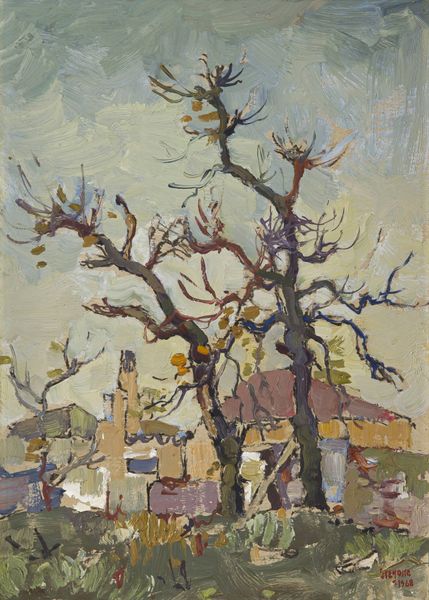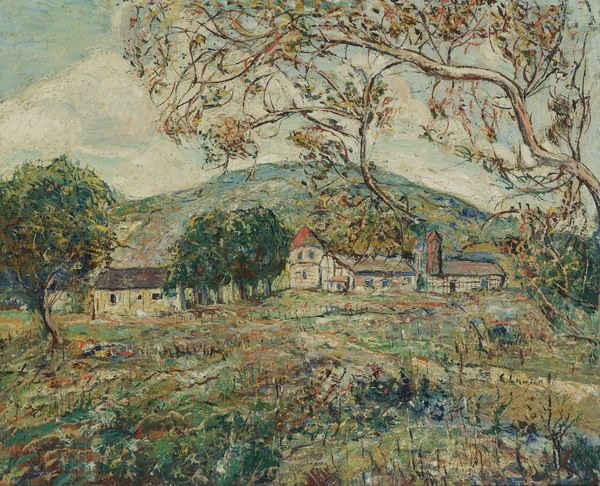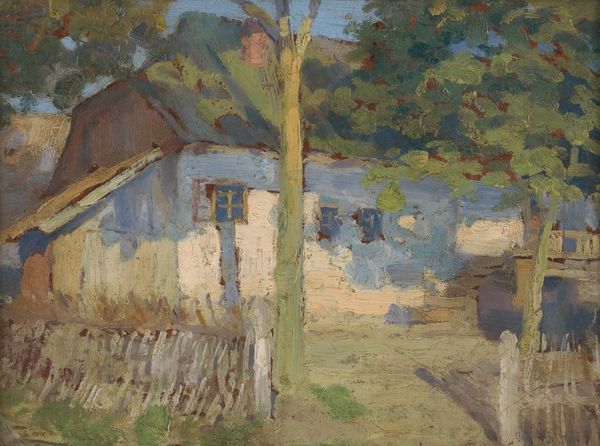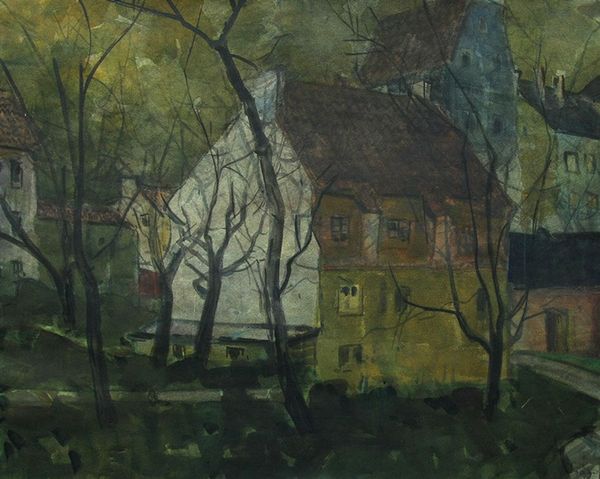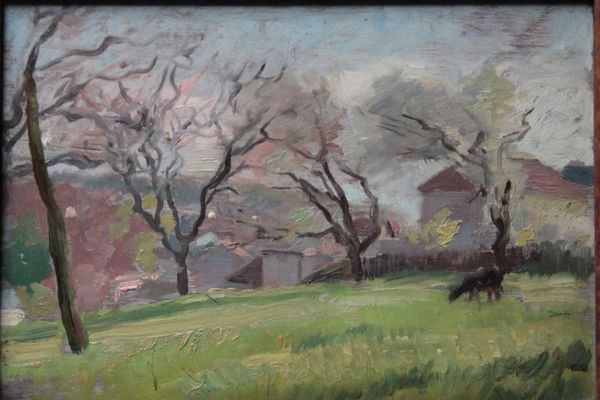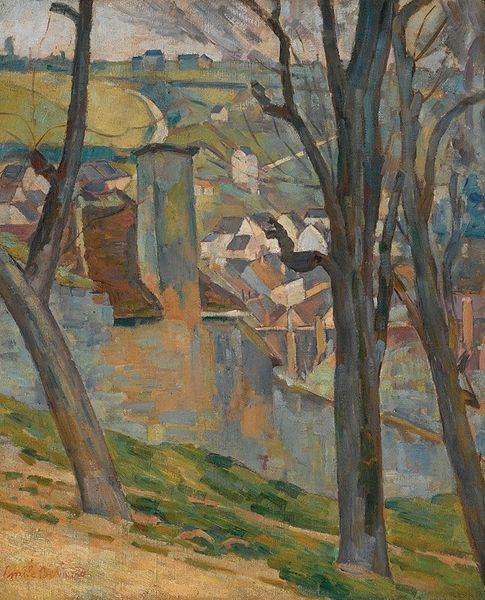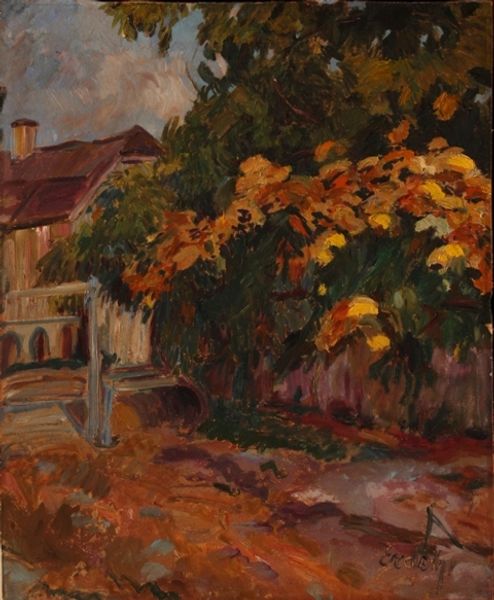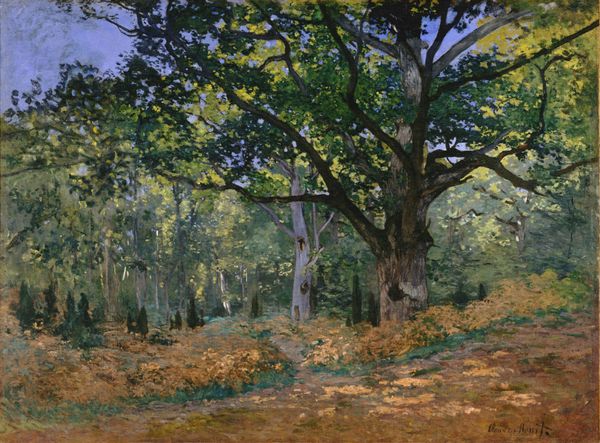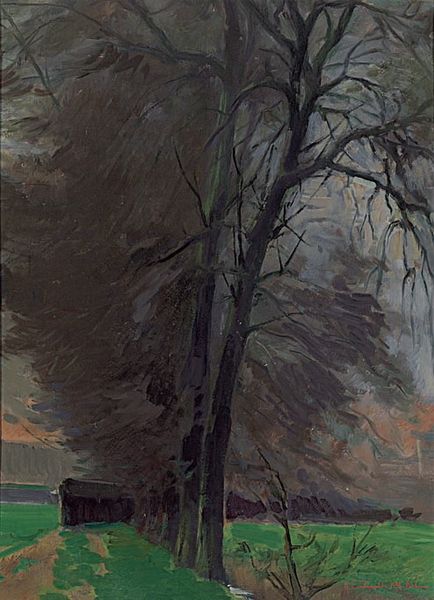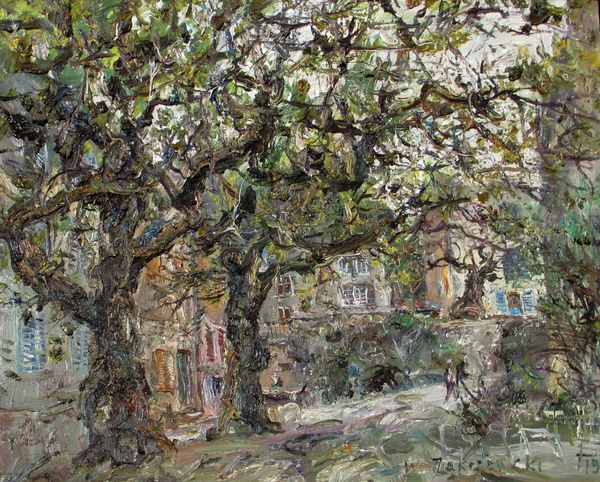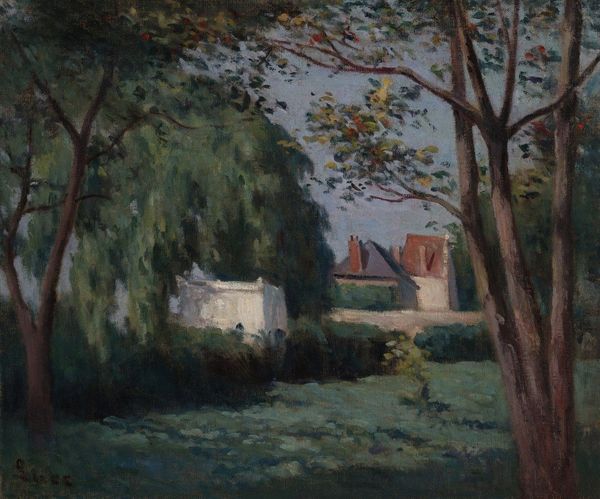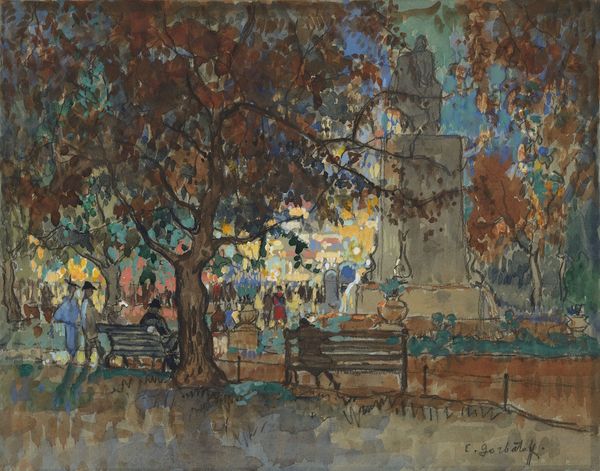
painting, oil-paint, impasto
#
painting
#
oil-paint
#
landscape
#
impressionist landscape
#
oil painting
#
impasto
#
expressionism
#
naive art
Copyright: Gregoire Boonzaier,Fair Use
Curator: This captivating painting is titled "Houses and Trees" by Gregoire Boonzaier. Executed in oil paint, it presents a scene imbued with a particular expressiveness. What are your initial impressions? Editor: It strikes me as rather melancholic. The muted palette, the stark, almost skeletal trees—it feels like late autumn, a time of letting go. There’s a quiet intensity. Curator: It is quite evocative. Viewing this piece through the lens of South African art history and Boonzaier's social consciousness reveals even greater depths. His work often subtly reflected the political landscapes he navigated, offering critiques of societal inequalities through seemingly innocuous landscapes. Editor: I notice how the trees, particularly, dominate the scene, their branches like reaching arms, or perhaps gnarled fingers pointing in different directions. Are these trees perhaps representative of something? Is the obscured scenery alluding to certain restrictions or oppressions? Curator: Exactly. Trees have a rich symbolic language, representing rootedness, growth, family lineage, or, conversely, obstruction, being uprooted. Boonzaier was deeply involved in social realist movements and depicted working-class life and landscapes—sometimes these landscapes act as metaphors. The placement and obscuring quality of those trees definitely lend themselves to interpretations along the lines of socio-political commentary. Editor: And that layering of the oil paint, the impasto technique, adds to the raw emotion. Each dab of paint feels like a conscious decision, a mark of the artist's own struggle or empathy. Curator: Indeed. The expressionistic handling, deviating from strict realism, amplifies the sense of emotional depth and socio-political relevance. Considering this painting in relation to apartheid-era tensions adds layers of significance, as the symbolism may comment on division and restricted mobility. Editor: Knowing Boonzaier's engagement with social issues certainly colors my perception of this work now. What initially felt like mere autumn melancholy now feels like a restrained protest, a quiet but firm stance. Curator: Exactly. This work invites reflection on the intersections of place, power, and artistic expression, inviting us to reconsider the landscapes we inhabit and how we can use art to navigate the terrain. Editor: It reminds us that art is so rarely just aesthetic, it’s almost always an active voice—waiting to be amplified by historical understanding.
Comments
No comments
Be the first to comment and join the conversation on the ultimate creative platform.

